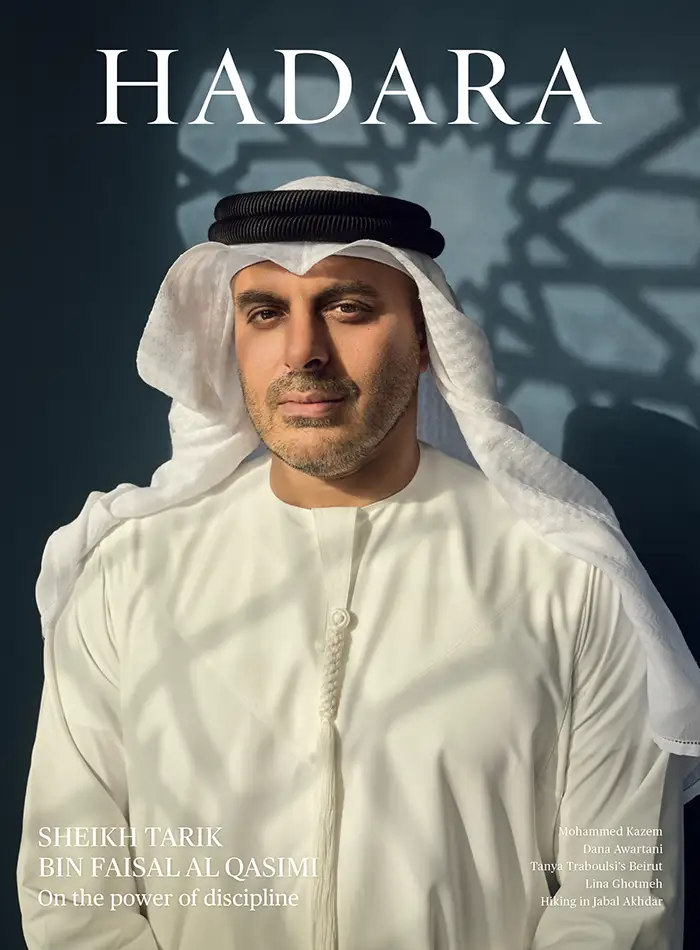The spaces in between
The second Islamic Arts Biennale in Jeddah is an invitation to visitors to seek the sacred in liminal spaces.
By Naima Morelli
Every day, we humans pass through airports, metro stations, and hotels as anonymous individuals. We do not relate or identify with these transitory spaces, which offer us little intimacy. In the definition of French anthropologist Marc Augé, these are “non-places.”
The second edition of the Islamic Arts Biennale in Jeddah, on show until May 25, seeks to turn this idea on its head. Embracing its unusual yet symbolic location—the Western Hajj Terminal of King Abdulaziz International Airport—the Biennale is themed And All That Is in Between. While the title references a recurring verse in the Quran, “And God created the Heavens and the Earth and all that is in between,” it seems also to be an invitation to visitors to traverse the liminal spaces not as strangers but rather as pilgrims—albeit art ones—finding a space for silence, love, and contemplation.
With striking tensile structures, gardens, water, and light, the terminal looks like a living hub, echoing the fluidity and interconnectedness of Islamic art which is found in the over 500 works, including 29 new commissions, on show here by more than 30 artists from the Arab world and beyond.
The notion of a journey is deeply ingrained in Islamic culture and is powerfully represented in works like Magnetism by Ahmed Mater, one of Saudi Arabia’s most celebrated artists, who, by twisting a magnetic cube, turning iron particles towards it, recreates the circulatory movement of pilgrims around the Kaaba.
On show for the first time to visitors outside Mecca is a Kiswah, the cloth that covers the Kaaba. Decorated with golden calligraphy, it covered the Kaaba last year. Hung in a different room to Mater’s piece, it is a simulacra of the collective ritual of Hajj.
Saudi artist Muhannad Shono, who curated the Biennale alongside associate curators Joanna Chevalier and Amina Diab, says the aim is to focus on the diversity of Islamic art and culture. “This year we will present institutions from Mali to Indonesia, as well as some very prestigious institutions from the non-Muslim world,” he says.
The juxtaposition of a historical section—showcasing rare artefacts such as an intricately carved Quran stand from the Mamluk period—and the contemporary installations creates a unitary narrative about how the values and aesthetics of Islamic tradition continue to evolve within modern contexts.
In fact, the Biennale doesn’t look at contemporary art as a break from tradition, but rather as a continuation of Islamic values, adapted to address the complexities of today’s world. “There is a dialogue which takes place here and which has been taking place over centuries between the objects, institutions, the ideas and the stories which underline these objects,” Shono says.
Indeed, the historical artefacts are in a dialogue with the contemporary. Taiwanese artist Charwei Tsai, for example, created a calligraphic painting on a scroll inspired by the Arabic word “Al Hilm” (meaning patience, knowledge or magnanimity) found on a 10th-century Samanid ceramic plate from the Louvre Museum.
A dialogue is also to be found across continents. Artist Nohemí Pérez presents a panoramic charcoal drawing, Sobre el fondo de mis noches, mixed with embroidery, representing her native Colombian flora and fauna mixed with those from Saudi Arabia.
From a delicate kinetic installation called Nafas by Saudi artist Saeed Gebaan, which mimics breathing by using golden filaments that rise and fall, to the spectacular suspended mirror installation Echoes of the Skies by German artist Timo Nasseri, art reminds us that to be enlightened is to be intimate with all things.
And this is ultimately what this second edition of the Islamic Arts Biennale whispers to us: if we can experience reality as sacred, there are no non-places. The spaces in between will become where the holy is to be found.
Islamic Arts Biennale 2025: And All That Is in Between, Western Hajj Terminal, King Abdulaziz International Airport, Jeddah. Until May 25.
Magnetism by Ahmed Mater, one of Saudi Arabia’s most celebrated artists. The work recreates the circulatory movement of pilgrims around the Kaaba. Photo: Marco Cappelletti, courtesy of the Diriyah Biennale Foundation.





